
Bagh-Chal Basic Strategy This Nugget has been written by Point01IV on 16 Aug at 2:19PM Category: Bagh-Chal: Tigers and Goats Bagh-Chal Basic StrategyBagh-Chal is an ancient game originating from rural Nepal. While easy to learn, mastering its strategy can be challenging. This guide offers basic strategies for both Tiger and Goat players. Tiger Strategy1. Identify Strong PositionsDuring the placement phase, focus on securing advantageous positions for the movement phase. There are six different spaces. Evaluate spaces based on movement options and potential jump directions: Next to Corners: Worst space for movement. Provides only 3 spaces to move and 2 spaces to capture. 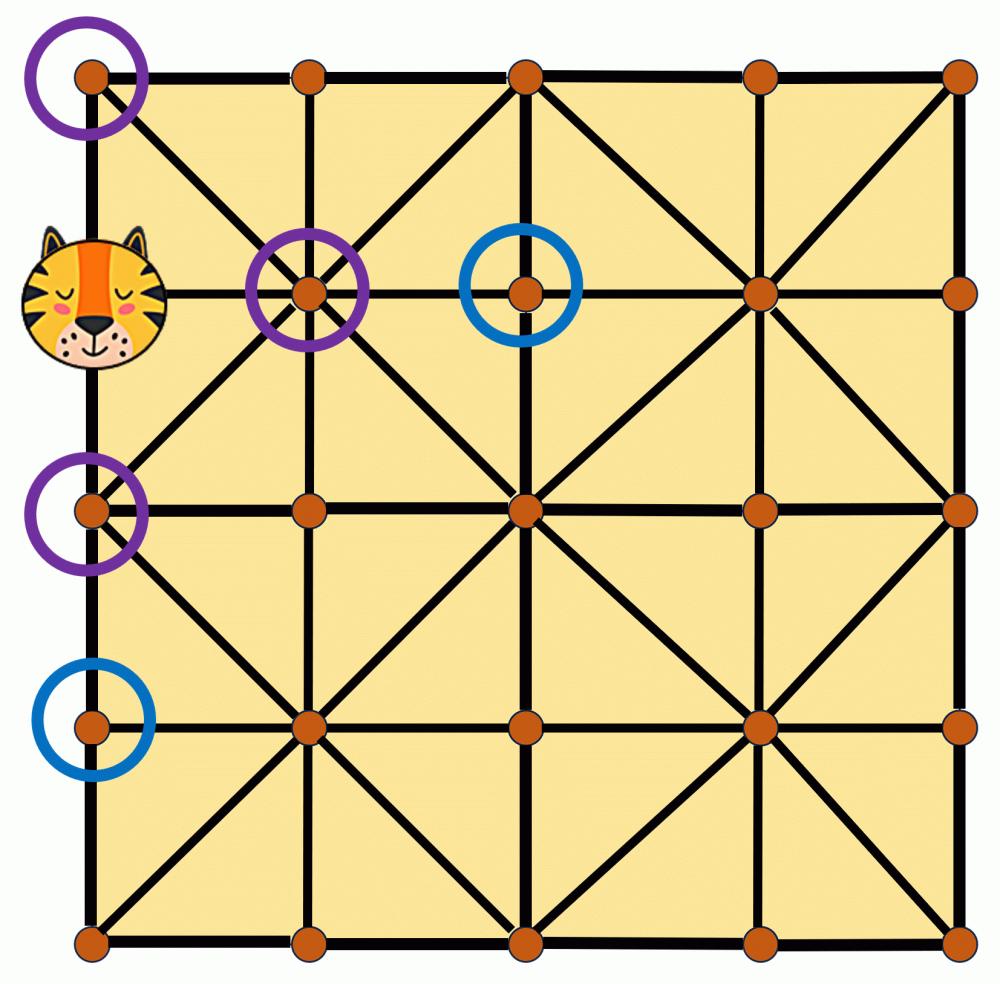 Corners: Second worse area. Only 3 spaces for movement and 3 jump directions. 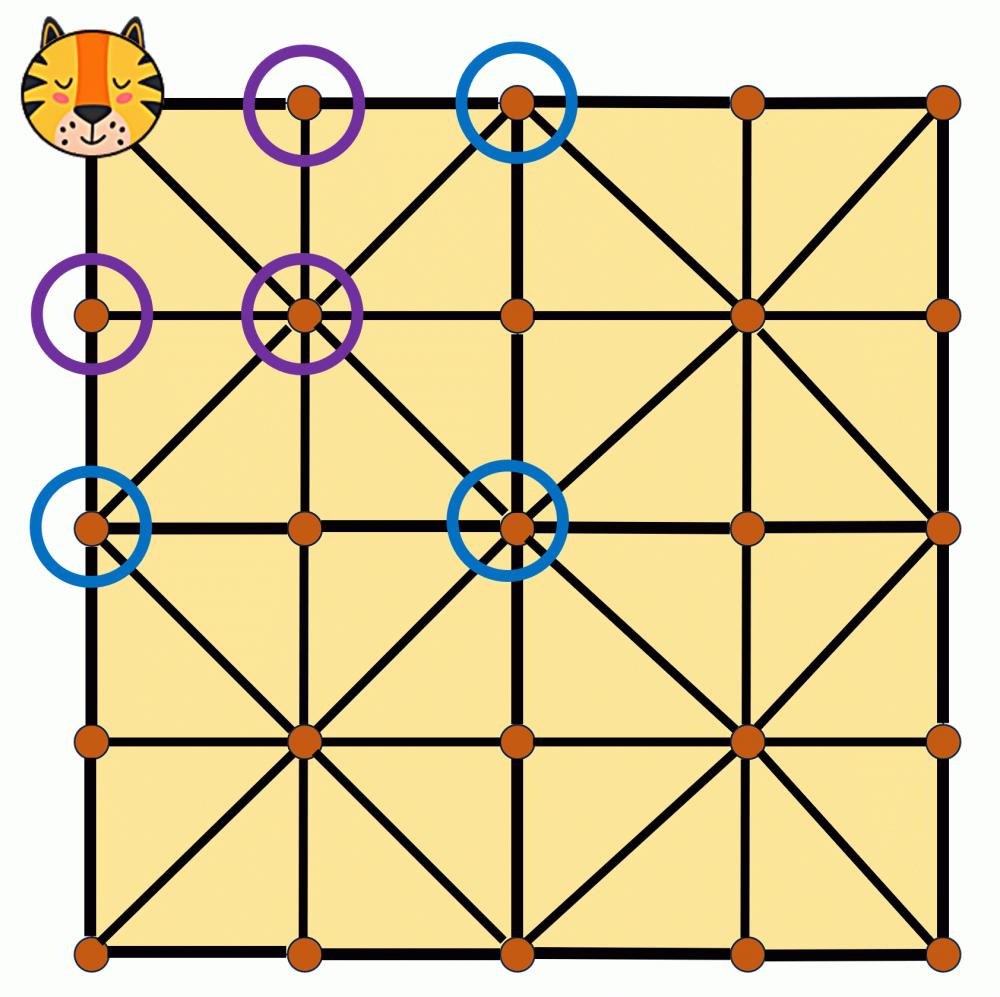 Next to Center: Lack of diagonal movements hurts it, but provides 3 jump directions and 4 spaces to move to.  Center: Excellent position with 8 movement and jump directions. **Note* - While this space provides the best mobility, it will also limit the capturing power of almost every other tiger on the board – I ignore this space as a tiger during the placement phase. Instead, try and protect it so any goats that are placed on it are captured immediately.*  Diagonal from corners: Very good square, with 8 movement and 3 jump directions. **Note*: Limit the amount of these you put a tiger on – every tiger on one of these spaces limits the jumps of all others on similar spaces.* 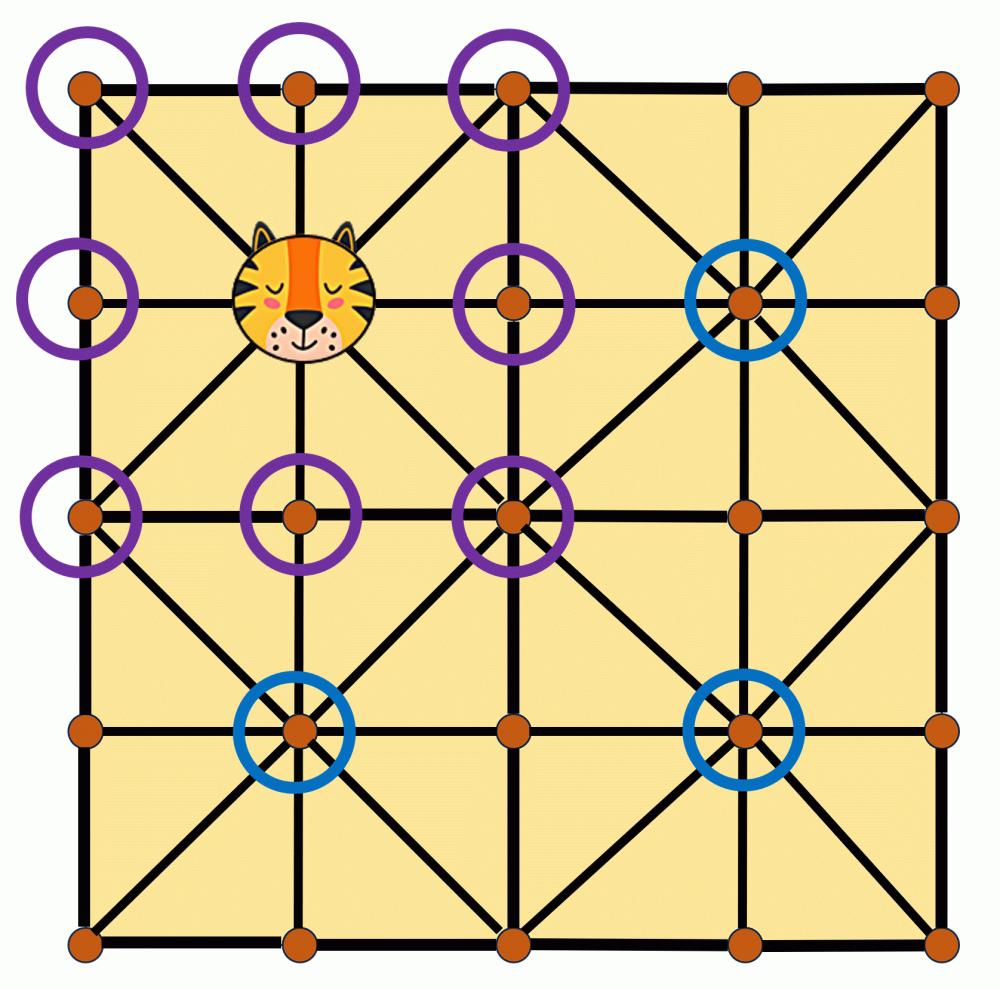 Center of sides: Arguably the best spaces, offering 5 movement and 5 jump directions. 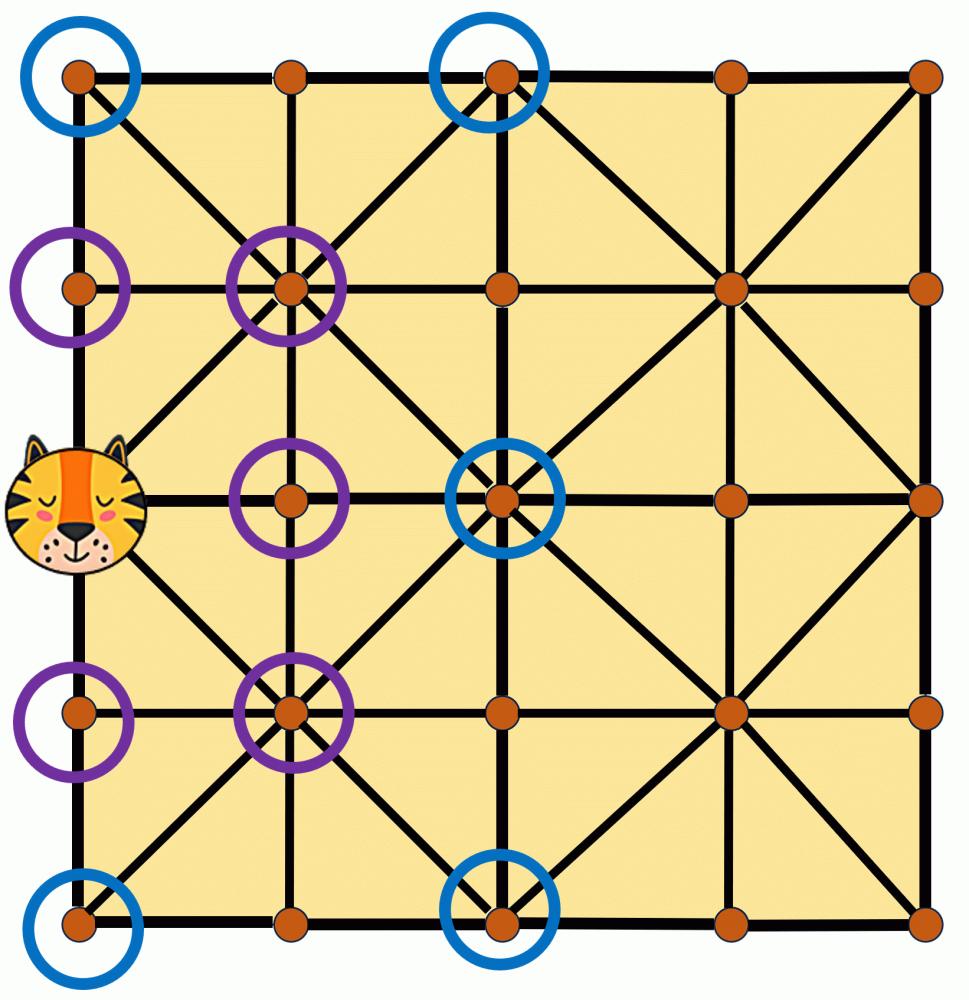 2. Spread Your TigersAt the start of the movement phase, spread out your tigers to maximize their effectiveness: • Separated tigers have more freedom to move and jump. • Spread-out formation restricts goat movement more effectively. • Clustered tigers are easier for goats to block (In the below photo, the tigers are grouped together, making the next goat move a victory for goats). 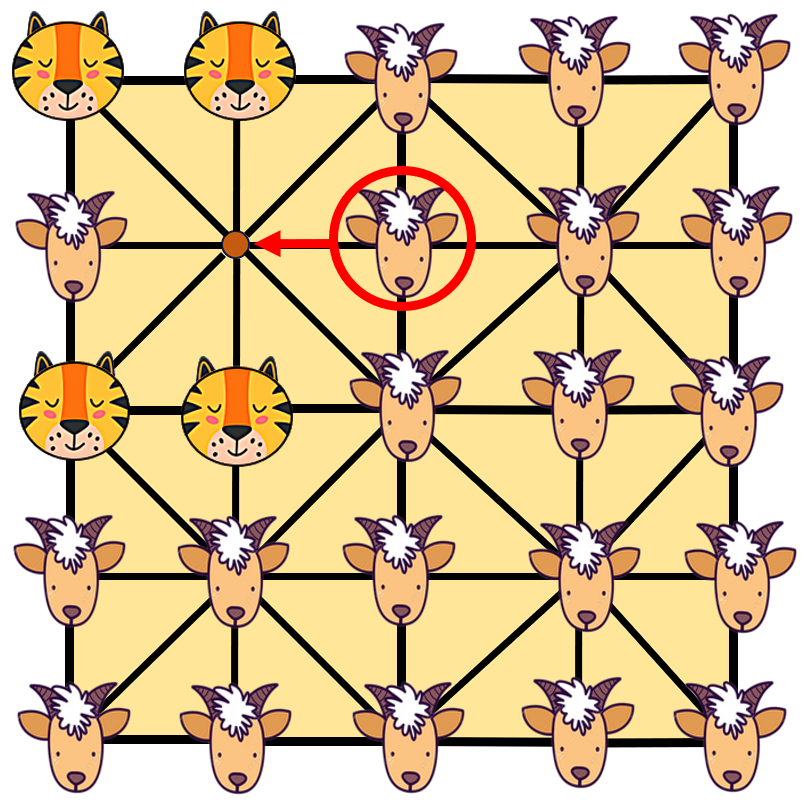 3. Aim for Early CapturesTry to capture at least one goat during the placement phase:• Early captures significantly reduce the goats' winning chances. • Position tigers to support each other and force goats into ambushes. • Example: Place two tigers 3 spaces apart in a straight line to create a capture threat (The below photo shows how this works. With the tigers in this position, it will be very hard for the goats to place a piece in between the tigers.)  4. Utilize Position Repetition RulesIn the movement phase, forced position changes can work to your advantage:• If struggling to make final captures, try forcing position repetitions. • This can compel goats to move into vulnerable positions. 5. Create Traps in Late GameAfter making at least three captures:• Use tigers to fence off areas of the board. • Herd goats into confined spaces where they're vulnerable to multiple tigers (In the below picture, you'll see how the tigers have created a "fenced off area" where goats can only enter from few locations. Each goat move on this board results in a capture). 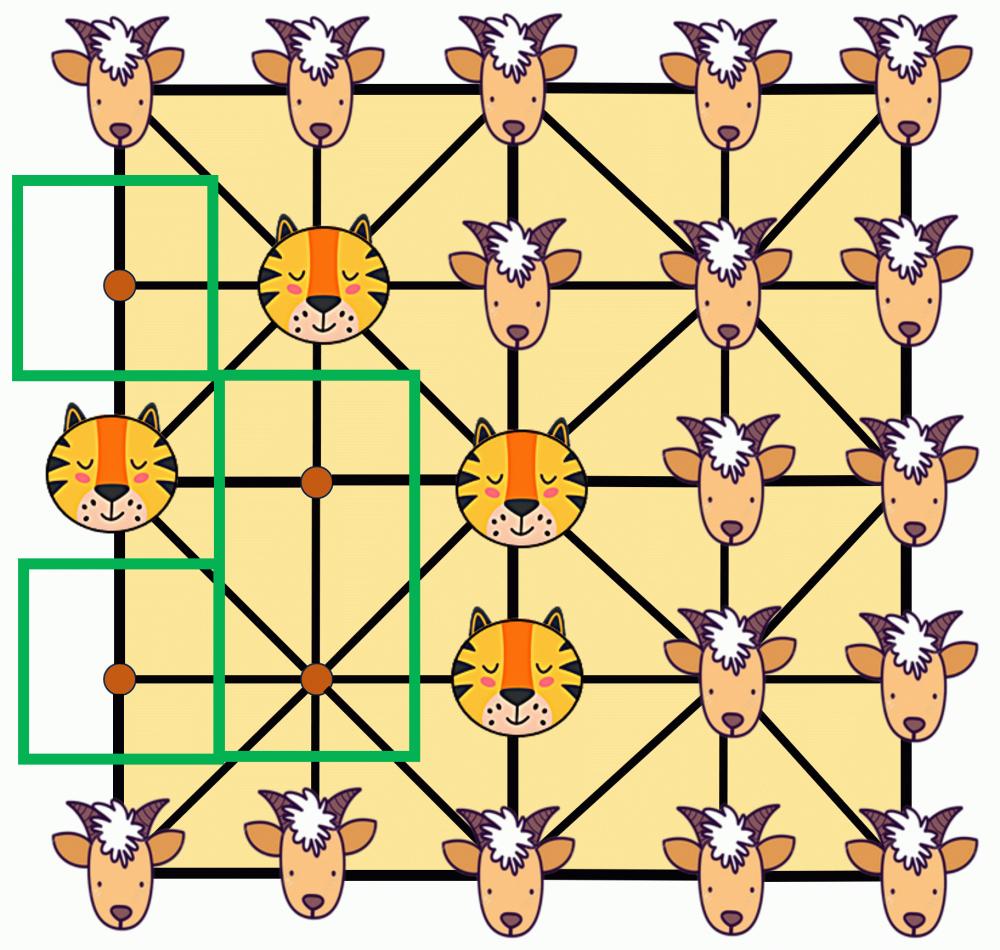 Goat Strategy1. Create "Bubbles"During the placement phase:• Try to block off spaces that tigers can't access. • Creating an inaccessible space guarantees a win if no goats are lost during placement. These pictures show how a blocked off area can translate into victory. By placing a goat where the star is located, the red space now becomes unreachable by tigers. Now, the goats just need to hold on for a guaranteed victory. 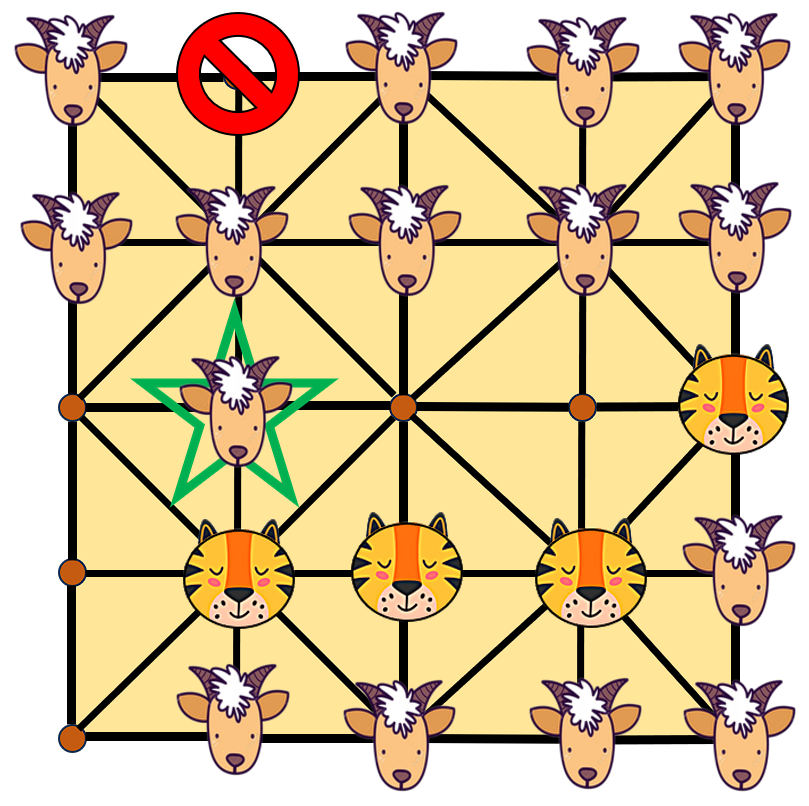 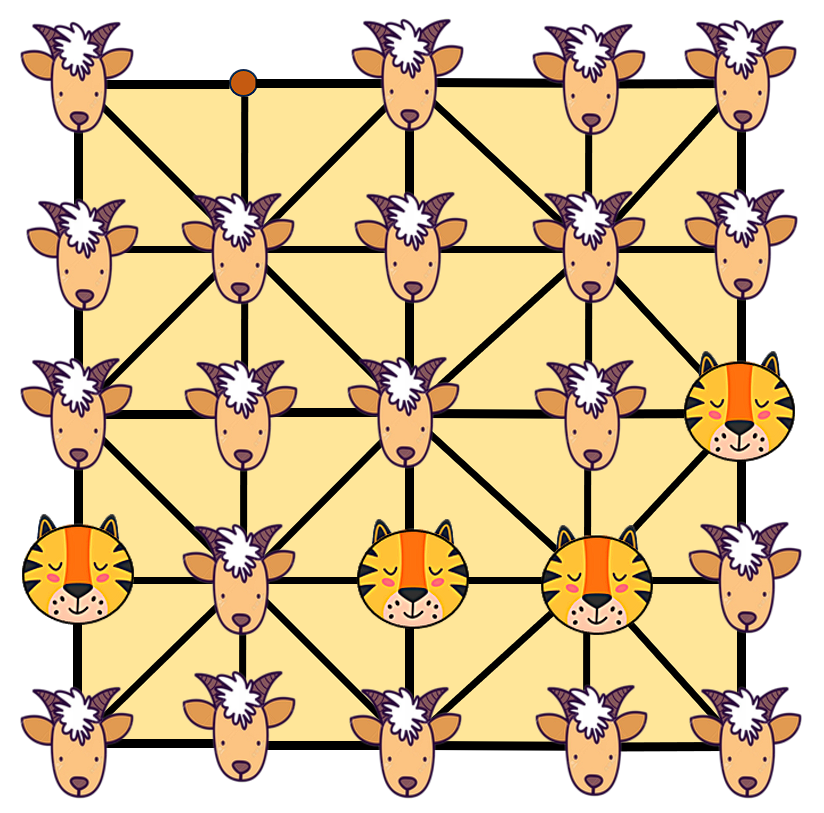 2. Strategic SacrificesDon't fear losing a single goat if it gains you an advantage:• The game remains balanced until goats lose two pieces. • Use sacrifices to lure tigers into unfavorable positions. • Sacrifices can help create "bubbles" or group tigers together. The below picture shows a placement of a goat that can be immediately captured. If tigers don't capture, it severely restricts tiger movement going forward. If the tiger captures, a goat can be placed on the spot that the tiger moved from to create two "bubbles" and guarantee a victory for goats. 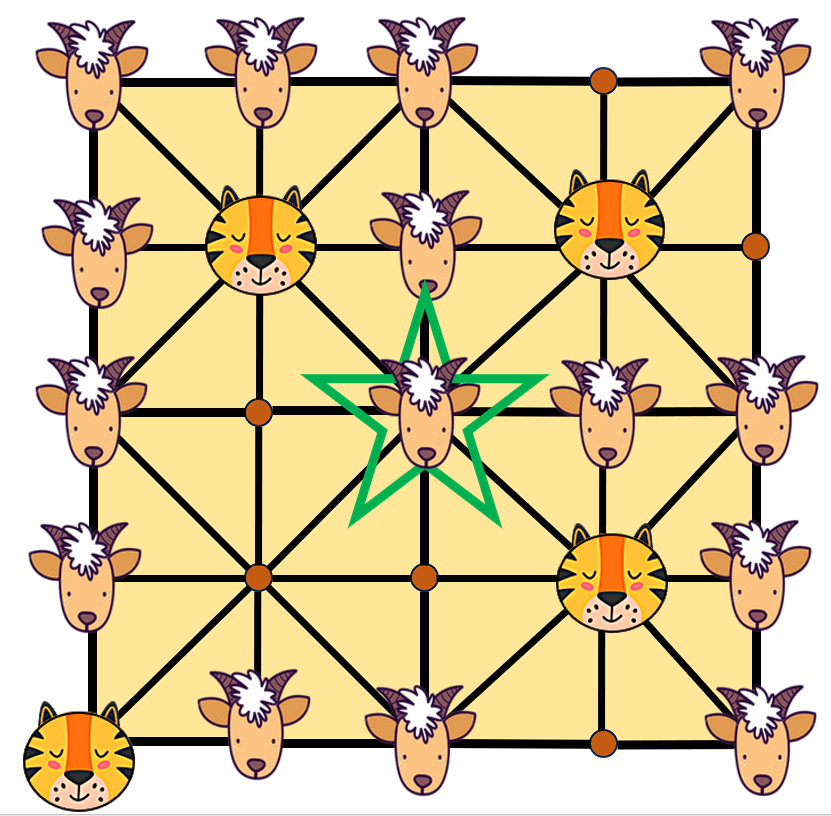 3. Force Tiger MovementsUse "bubbles" and the no-repetition rule to your advantage:• You can force tigers to make a move to change movement tempo if you use the spaces created by your bubbles to move goats to. • This is similar to zugzwang in chess. 4. Control Key SpacesPrioritize placing and protecting goats on the center spaces of each side:• These are strong positions for tigers, so denying them is crucial. • Controlling all four significantly increases your chances of winning. 5. Force Tigers TogetherUse strategic placements to limit tiger movement:• Place goats in spaces tigers have just left to prevent backtracking. • Gradually force tigers off the board's edge and closer together. Nugget Votes This Nugget has received 3 upvotes and no downvotes. You need to log in first to vote on Nuggets. Nugget Comments Very great analysis Posted on 1 Oct at 12:31PM by wallywalter Very clever and useful tips Nick, thank you!!!!!
|
©2000-2025 GoldToken.com LLC. All rights reserved. |